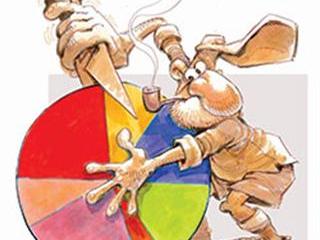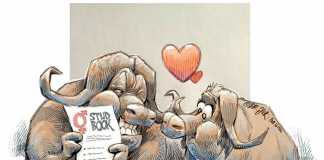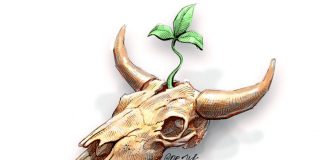
Organised agriculture has joined Cosatu and asked retailers to absorb more costs and pay farmers more for their produce. While this call might promote awareness among consumers and government about agriculture’s predicament in these times of soaring production inputs and high food prices, it probably won’t have any impact on hard-nosed businessmen. They have shareholders to consider and will happily import cheaper goods if they have to. As the founder of OK Bazaars liked to say, “to make money you must sell your stock at three times more than you paid for it”.
Market devices
Not all economic theories pan out – as the Dairy Board discovered in the early 1970s when confronted by a domestic cheese surplus. To solve the problem, its economists increased the price of cheese, believing this would somehow stimulate consumers to buy more. Naturally, even less was sold. It was only when the price was drastically reduced a few months later that cheese moved again.
The Dairy Board’s basic plan was not altogether illogical. A well-known vehicle manufacturer recently said that the best way to stimulate car sales is to hint at coming price increases. That usually stirs people to buy before the new prices kick in.
But food is bought every day, not every three years. Several years ago, when the mohair price was stuck on R30/ kg, farmers complained that it was not worth farming Angora goats and that the trade was ripping them off.
It infuriated them when a powerful businessman and mohair buyer argued that every business must look after itself and that it was not his task to make small-stock farming profitable or to keep farmers on their farms. After all, no one was looking after him, he said. And there would always be someone out there growing mohair for him to buy.
Since then, the mohair price has trebled, but farmers still believe the average price should be closer to R200/kg than the current R80/ kg. The R100/kg farmers are now getting for wool is not even close to the R400/ kg (inflation adjusted) of the wool boom in the early 1950s. Buyers claim that, as they work on an international price, they’re paying the same for Australian wool as for SA wool. (Aussie farmers have long given up competing for labour with industry, which raises their production costs.)
Beating inflation
Farmers use the so-called ‘bakkie inflation’ phenomenon to describe their weak bargaining position. During the 1980s, for example, one could buy the best new bakkie for the price of about 50 sheep. To do so today, one has to sell up to 400 sheep. For many, that is the best part of their flock. Car dealers will, of course, note that new vehicles are more powerful, safer and more advanced than those of yesteryear and that comparisons are meaningless.
The same can be said for raw milk, wine, wool and meat. By the time these products get onto a shop shelf, so much value has been added to them that they are completely different products: milk, wine and meats are cold and attractively packaged, labelled or bottled, with quality guaranteed and wastage taken care of. The wool has been made up into a fashionable suit, complete with lining and pockets.
These goods are conveniently kept under one roof where customers can pick and choose and purchase with credit cards.
Finally, the shops create markets for products that would otherwise never reach consumers. The average farmer cannot match any of the above. What some successful ones have done is to produce goods or animals that are so scarce or of such a high quality that clients beat a path to their door. Others have become powerful enough to fruitfully negotiate fair deals with processors or retailers.
The only way farmers can counter costs is to mechanise, downsize the labour force, add more value to products, switch to export products that score from a weakening rand, or sell directly to the public or manufacturers. It would be nice to squeeze more out of retailers, especially in times when even the super-rich are tight with their money, but what the country needs is more jobs, especially outside agriculture, that will improve the population’s spending power.
We need a bigger cake instead of smaller pieces. The scenario, in which bigger partnerships or companies dominate agricultural production, is not the ideal one, but it will soften price increases in some foods – and hopefully dispel the notion that state-run price control mechanisms can feed the nation.
The views expressed in our weekly opinion piece do not necessarily reflect those of Farmer’s Weekly.













